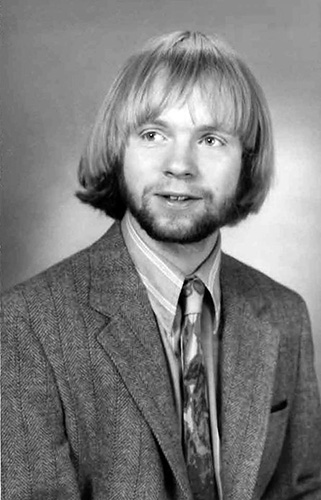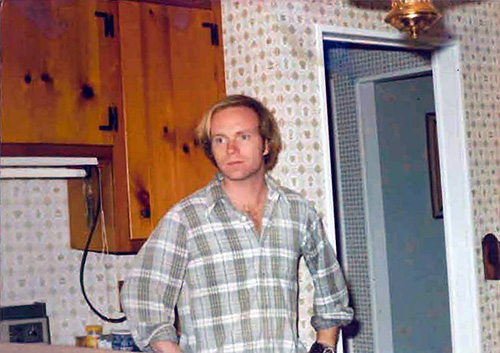
The 1970s began with my father's death in January and my grandfather Arthur's death in October. Thankfully, my Aunt Adele and Uncle Bill moved into our house to finish raising my sisters and brother. Without them I don't know what would have happened to our family.
In the spring of 1970 I graduated from Darrow School and spent the summer working as a toll collector on the New Jersey Turnpike. This was a very interesting job that taught me a lot about human nature. People would drive into my toll booth in New Jersey, ask me how to get to a certain address in Chicago, Illinois, and refuse to leave my booth until I could find someone to give them precise driving directions. Some would heat their change up in their vehicle cigarette lighter and then dump that scorching hot change into my hand. A very interesting lesson on human nature.

Traveling throughout Europe, alone with my backpack and camera, was simply a remarkable experience. Half the nights were spent sleeping in youth hostels, meeting others from foreign countries and having the opportunities to learn about their cultures. Other nights were spent in the woods outside of a random small towns, selecting a secluded spot in the dark and often waking up to a pleasant surprise like a deer grazing between me and a nearby castle that I wasn't able to see in the darkness the night before. While in Pamplona, Spain, I attended the nine-day Festival of Sanfermines (in honor of Saint Fermin) and ran with the bulls (probably not one of my more rational decisions, but I was young).
After returning from Europe I decided that I wanted to be a photojournalist and left Elmira College, taking a class at Middlesex Junior College that fall and then enrolling at Ohio University in Athens, Ohio.

Living in Boston was a wonderful experience because there is so much history there in the city, and Boston is in New England with an abundance of natural beauty.
However, a day after I had photographed the recovery efforts for a drowning victim's body and was admiring the published photo (and it was a very moving photo), I felt that perhaps I needed to sometimes also be on the other side of the camera, doing something more actively involved in helping victims and their families.
So I enrolled in an Emergency Medical Technician course in Newburyport, Mass., and soon found myself volunteering on an ambulance in Boston. Shortly after that I also gained my firefighter certification and served 10 years as a volunteer firefighter from 1975 until 1985.
In the early 1970s, EMS was transitioning from a mostly volunteer position to an actual profession. Perhaps this was because EMS was becoming more complex as new skills and knowledge requirements were being introduced, prompted (and required) by the "EMS White Paper" that was published in 1966 by the National Academy of Sciences as the paper "Accidental Death and Disability: The Neglected Disease of Modern Society." This paper noted that the state of emergency care across our nation was rather poor in the early sixties and it started a movement to improve emergency care. To advance this issue, the federal government tied highway funding to state's progress in advancing emergency care, requiring such things as a minimal certification level as an EMT to work on an ambulance and standards for ambulances and equipment.
Also during this time the American television series Emergency! debuted in 1972. The series featured two specially trained firefighters who formed Squad 51, part of the then-innovative field of paramedics who were authorized to provide initial emergency medical care to victims of accidents, fires, and other incidents in the field in order to stabilize them for transport to medical facilities. The television series is credited with advancing the field of paramedicine because many who watched asked "Why don't we have this in our community?" I wasn't content to ask why we didn't have paramedics — I wanted to become a paramedic. So I moved to Florida in 1975 so I could obtain my paramedic training in Miami (there were not many places where one could obtain this education at the time). While there I also volunteered as a firefighter.

In 1976 I was awarded a commendation by the City of Fort Lauderdale (Florida) Police Department for rescuing an unconscious police officer from a burning residence while I was off-duty. In 1979 I was nominated for a Carnegie Hero Fund Commission award for this same act.
So in 1979 I began looking for another place to work as a paramedic that was closer to home and which had actual seasons as I remembered them. Ideally I wanted to relocate to Maine but couldn't find a job there that paid enough. In October I moved to Louisville, Ky., to take a position as a paramedic for the City of Louisville Emergency Medical Services. Louisville EMS was an advanced-life support service using nurses working with EMTs, and they were in the process of replacing the nurses with paramedics.